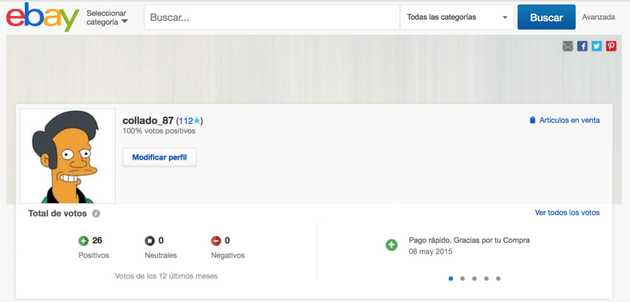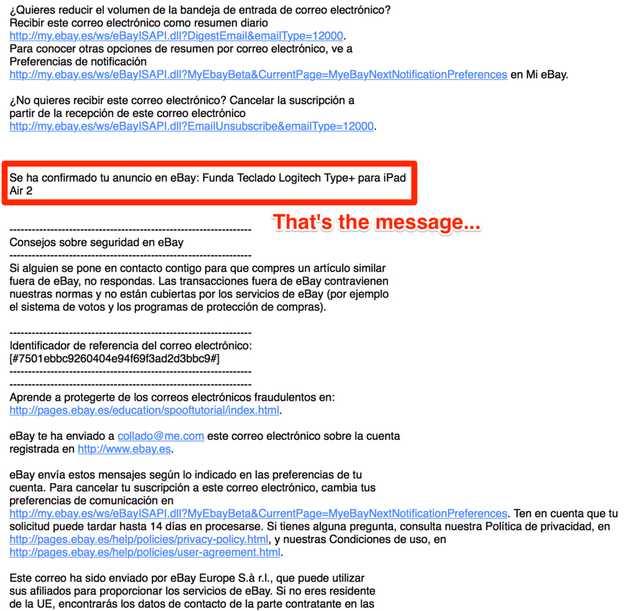Farewell, ebay
While eBay has undoubtedly grown into one of the largest online marketplaces, it has done it at the expense of becoming a jack of all trades, but master of none. Delivering a poor experience for solo-users wanting to sell their stuff.
🙋♂️ This is the first part of a two-post story around peer-to-peer, second-hand marketplaces — here you can find the second part of the story, but make sure you read this one first!
I’ve been an active eBay user since 2007. It all started the day I figured out I could get some money out of my PS2 in order to buy the brand new PS3. Back then I was 19 years old and it became a great revelation. It felt like magic: write a quick description, take a handful of photos, upload… and next thing you know I’ve sold the PS2 for what I considered to be a reasonable amount of money.
In the beginning, I struggled to understand how eBay worked. The idea behind auctions and (really) how to ship something — since I’ve never done it before — became a little bit of a challenge for the 19-year-old version of me, but long story short, I ended up buying the PS3 for much less than I’ve expected.
From that very moment, I’ve become an advocate for the company and sold dozens of items through the platform. I got rid of a lot of stuff I didn’t use — things I would never have thought were “eligible” to sell. Because eBay, to an extent, enables people to sell the products they don’t use, thus reducing waste and extending the lifespan of our stuff. Now consider — or at least guess — the scale they are operating at, and that’s ultimately a good thing.
eBay’s scale and ability to connect buyers and sellers is fascinating. I’ve uploaded really niche items, yet always found a potential buyer. Yet from a product perspective, such scale has come at a cost, and it is also true that the experience doesn’t feel optimized for the single individual that wants to sell her stuff online.
eBay was one of the first players in the space, undoubtedly the most successful. They aggressively colonized an empty market and appealed to a broader and broader audience as they grew, because of course, they could. I’ve already written about this idea because we have also gone through a similar situation — obviously at a way smaller scale — at iomando.
In a nutshell, the problem is that during a massive horizontal expansion, you keep capturing plenty of unrelated verticals, becoming a jack of all trades along the way. At some point, though, you have to focus and say no in order to tune your product to a certain audience, but that’s hard. But if you don’t, inevitably, someone else will. And they’ll come with a more optimized product, capturing your underserved niche with a more targeted experience. Think of how many services have thrived just by peeling away Craigslist verticals.
That’s exactly what eBay feels like today. Maybe they have chosen to optimize for larger sellers and retailers because it has turned out to be a more profitable space. Yet for the solo-user who wants to sell her unused stuff online, the experience feels exactly the same today than it felt when I sold my PS2, seven years ago.
In my mind, eBay has always been the go-to place to sell things online, and while the experience felt suboptimal, there was no alternative, it got the job done. But that’s not true anymore: a new breed of mobile apps optimized around the solo-user have taken over and surfaced eBay’s weaknesses when it comes to addressing this segment of the market.
Here are a handful of eBay’s flaws when it comes to selling an item, from the solo-user perspective. In the next post, I’ll do the same but coming from the other end, and analyze why these new mobile-first peer-to-peer marketplaces outdo eBay’s product in this particular segment of the market.
Overly complex publisher tools
In order to get an item out of the door, what could be reduced to a brief description and a handful of pictures, has become a confusing, endless list of options. While this might be great for power sellers with a wider range of items and categories, can feel overwhelming for a less sophisticated seller.
This is “only” the part you need to fill in order to set the starting price and the way you want to get paid. There is still a lot of scroll to be done until you reach the end.
There is now a mobile app and a simplified interface that eliminates some of the options, but still, it just hides some of the complexity — it is not intentionally designed to serve this market.
Item discovery is hard
There are hundreds of different categories you can choose from and sometimes the frontier between them is blurry. eBay promotes this pattern because they get more per publication if it ends up appearing in more categories, but it makes navigation and discovery way more difficult from the user perspective.
It has to be a better way to classify items 🙄
Identity
eBay was founded in 1995 when the Internet was still mostly based on anonymity and nicknames. Nowadays the Internet is built around trust and identity. Success stories like AirBnB wouldn’t be possible without its personal validity and the ability to build communities around real identities. If you are going to pay for something, you want to know who you are dealing with.
This is me at eBay, the only online place I haven’t set a real profile picture.
Communication
I always think twice before judging a certain feature or express my personal opinion around a product. If you haven’t been “there”, you can’t fully comprehend the range of constraints the team might have operated under during the product development and its lifecycle.
That being said, I’m having a really hard time understanding how eBay’s chat or internal communication tool came to be. Really, I can’t understand how its product manager “is able to” sleep at night.
I don’t think I need to say much about it… just let this screenshot speak for itself: this is a small excerpt of an email sent to a user to notify that a certain item has been published 😳.
Commissions
I get that in order to build a successful, healthy business, at some point, you have to charge your users. eBay’s pricing structure makes little sense for a solo-user, mixing fixed and variable costs.
As a seller, you’ll be charged at several stages of the process:
- Publication
- Successful sale
- Payment (if you use PayPal)
Which makes it difficult for the user when and how she’ll end up paying for the sale — especially worrisome with low-priced items, where the commission might end up taking almost the entire profit.
On top of that, the shipment is not managed through eBay’s platform, so the risk is totally handed down to the transaction party and also added to the entire “cost structure” of the deal.
Suboptimal buying experience
During these years, I’ve sold way more than I bought on eBay. Yet I’ve always thought for a buyer who “trusts” on another party to ship the thing once you have already paid is a little risky. What if the article doesn’t resemble the (low resolution) photos you were presented with? What if upon arrival it is broken? What if it never ships?
Paying for the item in advance puts the buyer in a really risky position, more so if you can’t later claim to the buyer, because she is hidden behind a fake nickname (see the point around Identity).
This is a random list of things that have occurred, top of my mind, just by thinking of my overall experience with eBay. And while I’m sure there’s more, you get the idea: the platform wasn’t intentionally designed for peer-to-peer transactions, and it remains like this. However, the lack of alternatives and amount of users participating made most of its solo-users stick with it.
But something’s changed: this week I’ve tried a new service that turns peer-to-peer transactions into an amazing, fun experience. This week I sold my first item through wallapop. In the next post I will discuss how wallapop has taken in consideration all eBay’s weaknesses and has leveraged the current state of technology to make of them their main competitive advantages.



